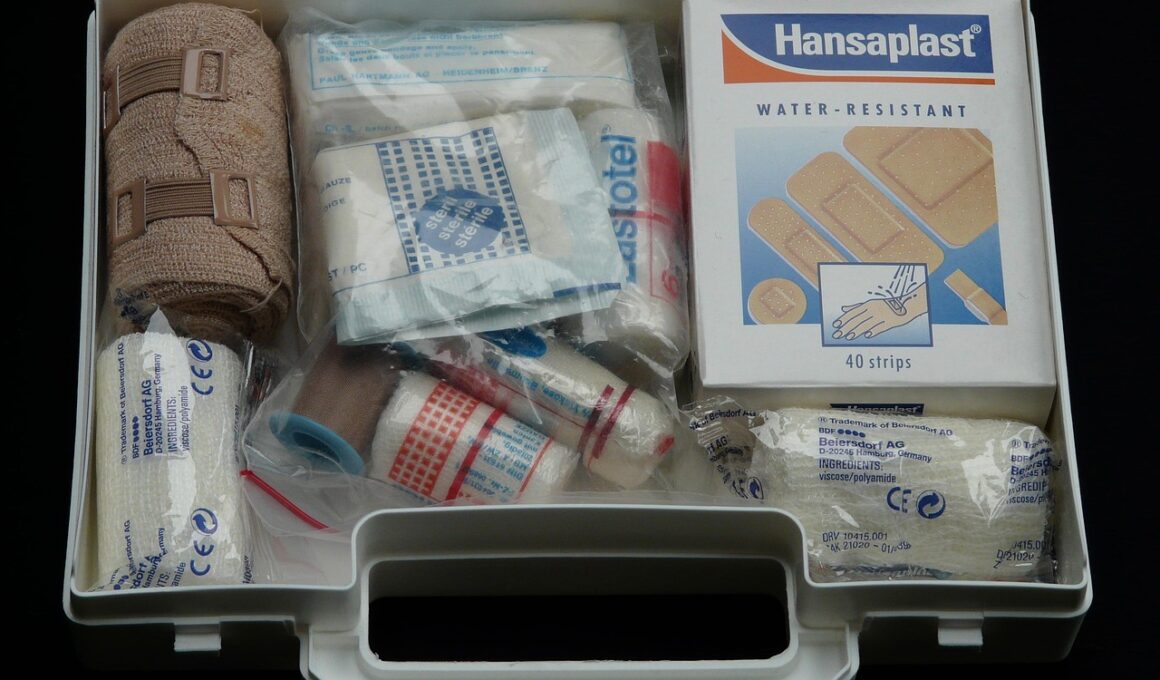Understanding Common Injuries and Emergencies
Cat owners must familiarize themselves with common injuries and health emergencies that can occur with felines. If your cat sustains a serious wound or sustains a potential fracture, the severity usually dictates the need for immediate action. Basic signs to observe include excessive bleeding, limping, or signs of pain. In lesser cases, you may only require basic first aid, such as cleaning a minor scrape. It’s vital to keep the first aid kit stocked with essentials like antiseptic wipes and bandages. Recognizing the difference between a minor issue and a major health crisis can significantly impact your cat’s recovery time. For example, bleeding from a small cut might not be an emergency, whereas consistent bleeding from the mouth could represent a critical condition. In such instances, it’s essential to act quickly and efficiently. Owners should stay calm and assess the situation properly before panicking. If in doubt, monitoring your cat’s condition closely until you can speak with a vet is advisable, balancing caution with knowledge. Understanding these concepts can assure that you are prepared for various scenarios, making a significant difference in your cat’s wellbeing.
When assessing your cat for injuries or emergencies, always prioritize their safety and comfort. Cats are known for their independent nature, but they can also panic when in pain or scared. If your cat is injured, ensure that you approach them carefully, avoiding any sudden movements that may frighten them further. Use treats or toys to help coax them if necessary but remember to observe their body language closely. If they exhibit signs of aggression or extreme fear, it may be best to create a calming environment before attempting any first aid. Providing a safe space where your cat feels secure will aid in assessing the situation effectively. If possible, have someone help you while you check your cat for visible injuries. Always wash your hands before touching their wounds to prevent infection. Once you have a clear view of the injury, you can make informed decisions about home care versus seeking professional help. If symptoms include lethargy, abnormal breathing, or large wounds, you should rush your cat to the nearest veterinary hospital for immediate professional treatment. Understanding these first steps can help ensure that your furry friend is well taken care of.
First Aid Kit Essentials for Cats
Equipping yourself with a well-stocked first aid kit designed specifically for cats is essential for every pet owner. Your kit should contain various items including antiseptic wipes, bandages, and scissors for cutting tape or gauze. Ensure you include a rectal thermometer specifically for cats, as temperature assessment can help determine general health status. Furthermore, having a list of your cat’s current medications, a recent photo for identification, and your veterinarian’s contact information is indispensable in emergencies. It is recommended to routinely check your stocked items to replace anything that has expired. Enabling quick identification of critical supplies is important; consider organizing similar items together and labeling them. Also, having a soothing agent, such as a cold pack, can help with minor swellings and bruising. Always remember to label your first aid kit clearly and place it in a location that is easily accessible, but also safe from curious paws. Training yourself in basic cat first-aid techniques will ensure you are ready whenever an emergency arises. Keeping a checklist will help maintain your kit’s stocked supplies in good order and readily available when you need them the most.
The next step after administering basic first aid is determining whether additional professional help is required. Symptoms such as difficulty breathing, severe bleeding, or signs of shock warrant immediate veterinary attention. A good rule of thumb is to err on the side of caution; if you’re unsure about the severity of your cat’s condition, reach out to your veterinarian. Keeping their contact information readily available can save valuable moments in emergencies. Many veterinarians also offer helplines that can provide immediate advice for various scenarios. For instance, if your cat accidentally ingests a toxic food, the vet can guide you on the next steps, such as inducing vomiting if necessary. Moreover, recognizing the signs of distress in your cat is crucial; if they appear unresponsive or excessively lethargic, you should seek help immediately. Sometimes, conditions might escalate quickly without visible symptoms initially. Thus, understanding your cat’s regular behavior allows you to identify when something isn’t right more rapidly. It’s always best to be prepared for any circumstance, ensuring both you and your feline companion feel safe and protected during stressful situations.
Preventive Measures for Cat Owners
Beyond knowing first aid and the right time to seek help, owners should also consider preventive measures to maintain their cat’s health and wellbeing. Regularly visiting your veterinarian can ensure vaccinations are up-to-date, and health issues are diagnosed early. Adequate nutrition, combined with regular exercise, helps keep your cat’s weight in check, reducing the risk of health problems. Furthermore, providing a safe environment at home minimizes the risks of injuries; consider using pet-proof safety devices that reduce the likelihood of accidents. Keeping potentially harmful household products like cleaners or plants out of reach is vital. Additionally, investing in interactive toys can stimulate your cat’s mind while keeping them physically engaged. Designing a tailored routine that embraces proper grooming practices can also enhance their overall health. Paying close attention to your cat’s daily habits can ensure early detection of any sudden changes. Creating a balanced routine in their lifestyle can significantly reduce the chance of emergencies occurring in the first place. By taking these proactive measures, you can ultimately maintain a joyful, healthy life for your feline friend.
When faced with uncertainty during an emergency, knowing where to gain trusted information is critical. Online resources from reputable veterinary organizations can provide vital guidance and checklists for various feline emergencies. Websites such as the American Association of Feline Practitioners offer wealth of knowledge about cat care and tips for emergencies. Additionally, pet insurance may be available to aid unexpected veterinary costs. Researching and selecting a plan that meets your needs can save many owners from financial strain during emergencies. Moreover, community awareness initiatives can help connect cat owners with local resources or support groups. Many veterinarians host workshops to educate pet owners about first aid procedures specifically for cats. Participating in these sessions can build confidence in your ability to assist your feline companion in emergencies while providing useful insights. Furthermore, engaging with other cat owners can foster a community of caring and shared lessons learned from past experiences. This network can be an invaluable resource, ensuring pet owners can support one another through unforeseen challenges. Ultimately, staying informed enables you to navigate uncertain situations with clarity and composure.
Conclusion: Being Prepared for Anything
In conclusion, being prepared for any situation involving your cat is an essential responsibility of pet ownership. Having knowledge of basic first aid, recognizing emergency scenarios, and keeping a stocked first aid kit can help you act effectively when needed. Regular veterinary check-ups, proper nutrition, and engagement will reduce the likelihood of emergencies. Education and community involvement also play critical roles; connecting with fellow cat owners and accessing credible online resources will fortify your knowledge base. A proactive approach equips you with the necessary skills to handle feline emergencies, providing peace of mind for both you and your furry companion. If an emergency ever arises, ensure that you remain calm and take the appropriate steps based on the situation at hand. By mastering the essentials of cat safety and first aid, you create an environment where your beloved pet can thrive. Remember, the well-being of your cat directly aligns with your commitment to their care. In emergencies, being equipped with the right knowledge and tools is the key to ensuring that your cat receives the best possible care, whether at home or at your vet’s office.


